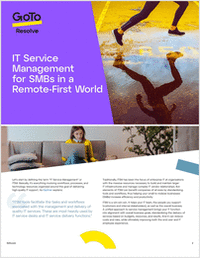Request Your Free Report Now:
"The Secrets of Successful SecOps Data Analytics"
If there’s something all security operations teams need, but few get right, it is utilizing security data analytics. An effective SecOps data analytics program enables SecOps teams to continuously monitor their environments for signs of compromise and stop potential attacks before they can cause serious damage. Also, good data makes effective collaboration between SecOps and IT possible. Here's how to make sense out of too much data and too many data sources for better enterprise security.
An organization’s security operations data is as foundational to an enterprise security program as it gets, and a security operations center (SOC) is only as effective as the data its SecOps team can act on. The more timely, relevant, and actionable the data, the more effective security teams will be. Enterprises must deal with many data sources, so a challenging, yet crucial, decision that needs to be made is determining what data will be collected, analyzed, and saved. Answers to the question of what to use and what not to use depend on the organization’s specific risk and business decisions.
Getting the data right, however, when it comes to collecting, aggregating, and analyzing is essential. SecOps teams need data to be effective and security teams can only be as effective as the information they’ve based their decisions and acting upon. The better-quality data SecOps teams get, and the better they can analyze that data for swift decisions, the more effective they will respond to the actions of the threat actors targeting them. There are a number of tools and platforms that can be used to manage data pipelines and transform raw data into a format that can be analyzed: Extended detection and response (EDR); Security orchestration, automation, and response (SOAR); and Data integration. Having a variety of data sources and raw data to analyze is not a guarantee the organization will succeed at security operations (SecOps) data “basics.” Teams can fail because they have too many data sources and too much data to sift through to find the most pressing enterprise threats. Common mistakes include:
- Lack of integration
- Inadequate data management
- Failure to automate
- Poor data quality
- Lack of collaboration
This report details tough yet important decisions enterprises must make to effectively collect, analyze and manage their security data so that SecOps teams can make the best decisions possible.
Offered Free by: Infoblox
See All Resources from: Infoblox






